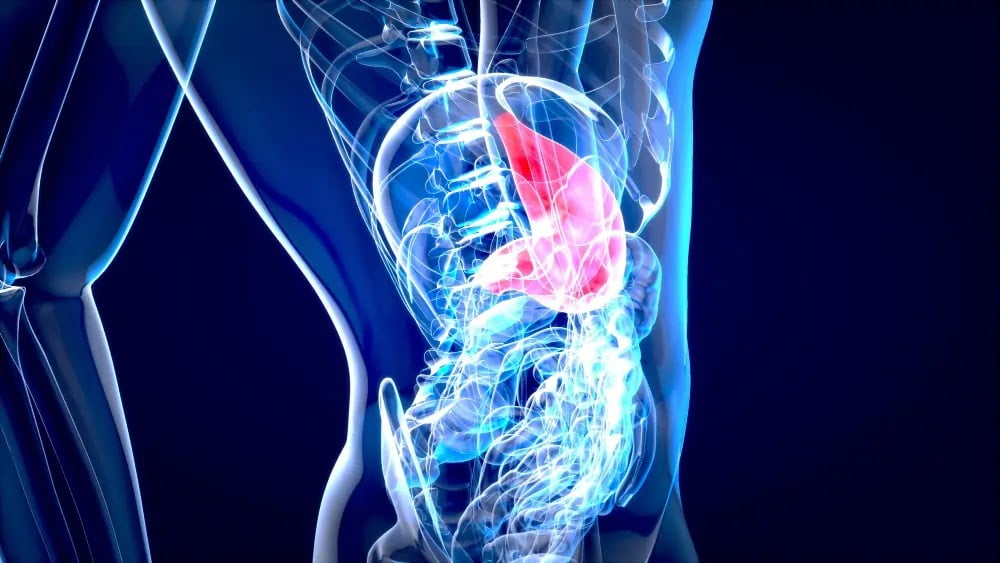
Fastest Way to Treat Arthritis
Arthritis, a condition characterized by inflammation and stiffness in the joints, affects millions of people worldwide. It can be a debilitating condition that hinders daily activities and reduces quality of life. Thankfully, advancements in medical research have led to various treatment options that can help alleviate arthritis symptoms and improve overall joint health. In this article, we will explore the fastest ways to treat arthritis, incorporating the latest news and updates in the field. So, let’s dive in and discover effective strategies for managing arthritis and regaining mobility.
Medication Options
Nonsteroidal Anti-Inflammatory Drugs (NSAIDs)
One of the most common and effective medications for arthritis treatment is Nonsteroidal Anti-Inflammatory Drugs (NSAIDs). These drugs work by reducing inflammation and relieving pain associated with arthritis. They are available over-the-counter or in prescription strength, depending on the severity of the condition. NSAIDs can help improve joint function and provide short-term relief from arthritis symptoms. However, it’s important to use them as directed and be aware of potential side effects, such as stomach irritation or increased risk of cardiovascular issues.
Steroids
Steroids, also known as corticosteroids, are another medication option for arthritis treatment. They work by suppressing the immune system and reducing inflammation in the joints. Steroids can be administered orally, topically, or through injections directly into the affected joints. They provide fast relief from pain and inflammation, making them an effective short-term solution. However, long-term use of steroids may have side effects, such as weight gain, osteoporosis, and increased susceptibility to infections. Therefore, they are usually prescribed for short periods and in low doses.
It’s important to note that medication options for arthritis treatment should be discussed with a healthcare professional. They will consider factors such as the severity of the condition, individual medical history, and potential interactions with other medications before prescribing the most suitable treatment plan.
Physical Therapy

Physical therapy is a crucial part of arthritis treatment, helping to improve joint mobility, strength, and flexibility. It involves various exercises and techniques designed to alleviate pain and improve overall physical function. Physical therapists work with patients to develop individualized exercise regimens that can help manage arthritis symptoms and improve quality of life.
Exercise Regimens
Exercise is a key component of physical therapy for arthritis treatment. It can help reduce inflammation, increase range of motion, and improve muscle strength and endurance. Physical therapists may recommend different types of exercises, such as low-impact aerobics, strength training, and flexibility exercises, depending on the individual’s needs and abilities. Exercise regimens should be performed regularly and with proper guidance to avoid injury and achieve maximum benefit.
Hot and Cold Therapy
Hot and cold therapy are simple yet effective techniques used in physical therapy for arthritis treatment. Heat therapy involves applying warm compresses or taking warm baths to relax muscles and increase blood flow to the affected joints. Cold therapy, on the other hand, involves applying cold compresses or ice packs to reduce inflammation and numb pain in the joints. Both therapies can be used in combination with other treatments to provide maximum relief from arthritis symptoms.
Lifestyle Modifications
Lifestyle modifications play an essential role in managing several chronic conditions, including arthritis. Making changes to one’s diet and weight management can help reduce inflammation, and improve joint function, and overall quality of life.
Diet and Nutrition
A balanced and healthy diet is crucial for individuals with arthritis. Certain foods can trigger inflammation, while others can help reduce it. Incorporating an anti-inflammatory diet rich in fruits, vegetables, whole grains, lean protein, and healthy fats, such as omega-3 fatty acids, can help reduce inflammation and manage arthritis symptoms. Additionally, avoiding processed foods, sugary drinks, and excessive alcohol consumption can also help improve overall health and reduce arthritis symptoms.
Weight Management
Maintaining a healthy weight is crucial for individuals with arthritis, as excess weight can put additional stress on the joints and exacerbate arthritis symptoms. Losing weight through a combination of diet and exercise can help reduce joint pain, and improve mobility and overall quality of life. A physical therapist or a nutritionist can help develop a personalized weight management plan for individuals with arthritis.
Alternative Therapies
Alternative therapies are often considered as complementary approaches to traditional medical treatments for various health conditions, including arthritis. Two popular alternative therapies for arthritis are acupuncture and herbal supplements.
Acupuncture
Acupuncture is an ancient Chinese practice that involves the insertion of thin needles into specific points on the body. It is believed to help balance the flow of energy, known as Qi, and stimulate the body’s natural healing abilities. Some individuals with arthritis find acupuncture helpful in reducing pain and improving joint mobility. However, the scientific evidence supporting its effectiveness for arthritis is mixed. It is important to consult with a qualified acupuncturist and discuss the potential benefits and risks before considering acupuncture as part of an arthritis treatment plan.
Herbal Supplements
Herbal supplements are derived from plants and are often used to alleviate arthritis symptoms. Some commonly used herbal supplements for arthritis include turmeric, ginger, boswellia, and devil’s claw. These supplements are believed to have anti-inflammatory properties and may help reduce pain and inflammation associated with arthritis. However, it is crucial to consult with a healthcare professional or a qualified herbalist before starting any herbal supplements, as they may interact with medications or have potential side effects.
Surgical Interventions

Surgical interventions are sometimes necessary for individuals with certain orthopedic conditions or injuries that do not respond to non-surgical treatments. Two common surgical procedures performed to address joint-related issues are joint replacement surgery and arthroscopic surgery.
Joint Replacement Surgery
Joint replacement surgery, also known as arthroplasty, involves removing the damaged or diseased joint and replacing it with an artificial joint made of metal, plastic, or ceramic components. This procedure is commonly performed for severe arthritis or joint degeneration that causes chronic pain, stiffness, and limited mobility. Joint replacement surgery can provide significant pain relief, improve joint function, and enhance overall quality of life. However, it is important to note that joint replacement surgery is typically considered after other non-surgical treatment options have been exhausted.
Arthroscopic Surgery
Arthroscopic surgery is a minimally invasive procedure that involves using a tiny camera, called an arthroscope, and specialized surgical instruments to diagnose and treat joint problems. It is commonly performed for conditions such as torn ligaments, damaged cartilage, or joint inflammation. During the procedure, small incisions are made, and the arthroscope is inserted to visualize the joint’s interior. The surgeon can then repair or remove damaged tissues using the surgical instruments. Arthroscopic surgery offers several advantages over traditional open surgery, including smaller incisions, reduced tissue damage, faster recovery, and less postoperative pain.
It is important to note that surgical interventions, including joint replacement surgery and arthroscopic surgery, carry risks and require careful evaluation and consideration by a qualified orthopedic surgeon. The decision to undergo surgery should be based on a thorough assessment of the individual’s specific condition, symptoms, overall health, and the potential benefits and risks associated with the procedure. Consulting with a healthcare professional is essential to determine the most appropriate surgical intervention, if needed, for optimal joint health and function.
Conclusion
In conclusion, the fastest way to treat arthritis involves a combination of medication, physical therapy, lifestyle modifications, alternative therapies, and surgical interventions. By working closely with healthcare professionals to develop a personalized treatment plan, individuals can effectively manage arthritis symptoms and improve their overall quality of life. Remember, early intervention and a comprehensive approach are key to achieving long-term relief from arthritis pain.
FAQs
1. Can arthritis be completely cured?
While there’s no definitive cure for most types of arthritis, early intervention and appropriate management can significantly alleviate symptoms and slow progression.
2. Are there specific foods that worsen arthritis symptoms?
Certain foods like processed sugars, saturated fats, and high levels of salt may exacerbate inflammation and joint pain in some individuals with arthritis.
3. Is exercise beneficial for arthritis sufferers?
Yes, targeted exercises that improve flexibility, strengthen muscles, and maintain joint function are beneficial for individuals with arthritis. However, it’s essential to consult a healthcare professional for guidance.
4. Is surgery the only option for severe arthritis cases?
Surgery is typically considered when conservative treatments fail to provide relief. Other options should be explored before opting for surgical interventions.
5. How can one differentiate between different types of arthritis?
Consulting a healthcare provider for a proper diagnosis is crucial, as each type of arthritis presents with distinct symptoms and may require specific treatment approaches.



 Afrikaans
Afrikaans Albanian
Albanian Amharic
Amharic Arabic
Arabic Armenian
Armenian Azerbaijani
Azerbaijani Basque
Basque Belarusian
Belarusian Bengali
Bengali Bosnian
Bosnian Bulgarian
Bulgarian Catalan
Catalan Cebuano
Cebuano Chichewa
Chichewa Chinese (Simplified)
Chinese (Simplified) Chinese (Traditional)
Chinese (Traditional) Corsican
Corsican Croatian
Croatian Czech
Czech Danish
Danish Dutch
Dutch English
English Esperanto
Esperanto Estonian
Estonian Filipino
Filipino Finnish
Finnish French
French Frisian
Frisian Galician
Galician Georgian
Georgian German
German Greek
Greek Gujarati
Gujarati Haitian Creole
Haitian Creole Hausa
Hausa Hawaiian
Hawaiian Hebrew
Hebrew Hindi
Hindi Hmong
Hmong Hungarian
Hungarian Icelandic
Icelandic Igbo
Igbo Indonesian
Indonesian Irish
Irish Italian
Italian Japanese
Japanese Javanese
Javanese Kannada
Kannada Kazakh
Kazakh Khmer
Khmer Korean
Korean Kurdish (Kurmanji)
Kurdish (Kurmanji) Kyrgyz
Kyrgyz Lao
Lao Latin
Latin Latvian
Latvian Lithuanian
Lithuanian Luxembourgish
Luxembourgish Macedonian
Macedonian Malagasy
Malagasy Malay
Malay Malayalam
Malayalam Maltese
Maltese Maori
Maori Marathi
Marathi Mongolian
Mongolian Myanmar (Burmese)
Myanmar (Burmese) Nepali
Nepali Norwegian
Norwegian Pashto
Pashto Persian
Persian Polish
Polish Portuguese
Portuguese Punjabi
Punjabi Romanian
Romanian Russian
Russian Samoan
Samoan Scottish Gaelic
Scottish Gaelic Serbian
Serbian Sesotho
Sesotho Shona
Shona Sindhi
Sindhi Sinhala
Sinhala Slovak
Slovak Slovenian
Slovenian Somali
Somali Spanish
Spanish Sundanese
Sundanese Swahili
Swahili Swedish
Swedish Tajik
Tajik Tamil
Tamil Telugu
Telugu Thai
Thai Turkish
Turkish Ukrainian
Ukrainian Urdu
Urdu Uzbek
Uzbek Vietnamese
Vietnamese Welsh
Welsh Xhosa
Xhosa Yiddish
Yiddish Yoruba
Yoruba Zulu
Zulu